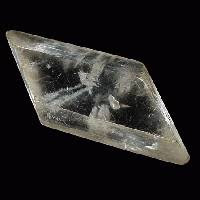- In chemistry, selenite, [SeO3]2−, is a diconjugate base of selenous acid, H2SeO3.
- In mineralogy, selenite is a variety of gypsum, CaSO4·2H2O.
- In science fiction, e.g. in The First Men in the Moon by H. G. Wells, the native inhabitants of the Moon are referred to as “Selenites”.
All three words are derived from Σελήνη, Greek for the Moon. Ironically, only fictitious Selenites have a “real” lunar connection.
.png) (1) |  (2) |
Selenite (1) — not to be confused with selenate or selenide — is named similarly to other oxoanions of “ous” acids, such as sulfite or nitrite. The systematic name recommended by the Red Book is trioxidoselenate(2−). Now, Berzelius gave the element selenium its name by analogy with tellurium, which, in its turn, was named after Tellus, Latin for Earth. (Do you follow the logic?) The Mineral Information Institute gives an alternative explanation:
This is a reference to the silvery-gray color of metallic, non-crystalline selenium.
A similar line of thinking is responsible for naming of selenite (2):
From the Greek σελήυη, for “moon”, in allusion to the moon-like white reflections of the mineral or to the quality of the light transmitted by semi-pellucid gypsum slabs of cleavages used as windows.
Fine, but not as touching as this childhood belief:
When we were studying chemistry and the teacher talked about selenium, I thought that selenium was named after a Mexican pop star Selena who died during my childhood.
Speaking of Mexico: the world’s largest natural crystals, some as long as 11 meters, consist of selenite (2) and are found in Cueva de los Cristales in Chihuahua, Mexico.








No comments:
Post a Comment